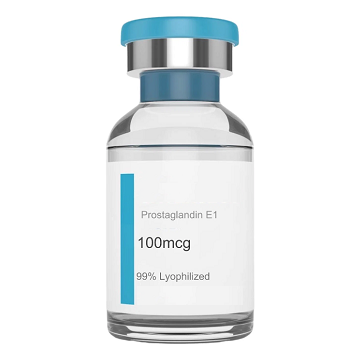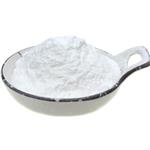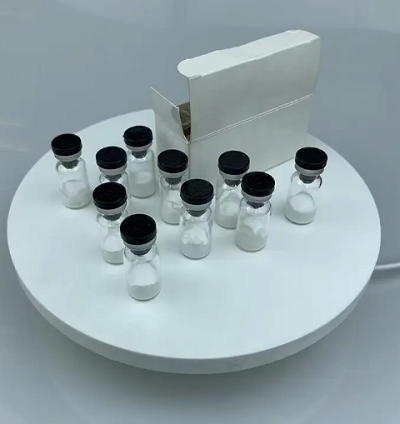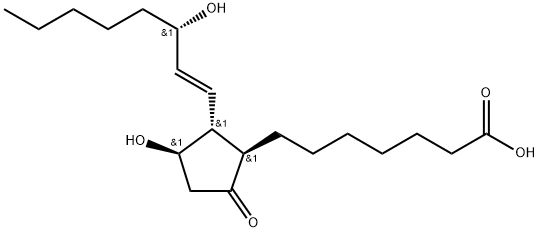What kind of drug is Prostaglandin E1?
Jun 19,2024
Introduction
Prostaglandin E1 (PGE1) is a naturally occurring substance present in various mammalian tissues, including the semen of fertile men[1]. PGE1 is a weak prostaglandin used to maintain the patency of the ductus arteriosus. In the context of PHTN, its theoretical benefit is its ability to offload increased right ventricular pressures through the duct, thereby maintaining systemic perfusion at the expense of oxygen saturation.

PGE1 is a potent vasodilator and specifically maintains patency of the ductus arteriosus in the fetus and newborn. The exact mechanism of PGE1 vasodilation specific to the ductus arteriosus is poorly delineated. However, PGE1 appears to result in dose-related increases in nitric oxide and synthase in other tissues. PGE1 also acts as an inhibitor of platelet aggregation.
Uses and mechanism of action
The major indication for PGE1 is maintaining patency of the ductus arteriosus in infants with congenital heart disease (CHD). Ductal-dependent CHD includes lesions with inadequate pulmonary blood flow, inadequate systemic blood flow, and inadequate mixing. The introduction of PGE1 into clinical practice in 1976 allowed the stabilization and recovery of newborns with nearly all ductal-dependent cardiac lesions prior to the repair or palliation of complex congenital heart lesions.
Newborns with right-sided obstructive lesions may have ductal-dependent pulmonary blood flow and present with cyanosis and paucity of pulmonary blood flow by chest radiograph. Cyanosis will improve dramatically with the initiation of PGE1. Infants with left-sided obstructive lesions may have ductal-dependent systemic blood flow and present with systemic hypoperfusion and shock. PGE1 administration usually results in the resolution of acidosis and increased pulses.
Newborns with transposition of the great arteries (TGA), with or without a VSD, will have ductal-dependent mixing if the intracardiac shunting is inadequate. A subset of these patients with nearly intact atrial septum will present with early shock; however, a majority of infants with TGA present with isolated cyanosis. Initiation of PGE1 will help stabilize these patients until a balloon atrial septostomy can be performed.
PGE1 is also used to treat erectile dysfunction (ED), acting via specific PGE receptors EP2 and EP4 on smooth muscle to increase intracellular cAMP synthesis and potentiate smooth muscle relaxation. PGE1 is a useful treatment for ED despite its delivery via penile injection and intraurethral routes. Injecting drugs like alprostadil into the penis can lead to stronger erections by engorging the penis with blood, but it can lead to priapism[2]. Blockade of endogenous vasoconstrictor-induced tone in corpus cavernosum smooth muscle can also induce penile erection. However, the nonselective α-adrenoceptor antagonist phentolamine showed only modest efficacy in mild to moderate ED. Endothelin (ET) antagonists were also considered to be a useful treatment option for ED based on the potent contractile activity of ETs in vitro in the penis. However, an ETA-selective receptor antagonist, BMS-193884 (21), was effective on rabbit and human corpus cavernosa but failed to show efficacy in the clinic.
In doses of 10-20 micrograms, PGE1 produces full erections in 70-80% of patients with erectile dysfunction. In diagnostic use, PGE1 is employed as a simple office test in conjunction with various hemodynamic tests. Self-injection of PGE1, either with the patient or his partner administering the injection, is a minimally invasive and effective treatment for erectile dysfunction in patients with organic or psychogenic erectile dysfunction.
Side effects
Side effects of PGE1 include hypotension, temperature elevation, edema, and hypoventilation[3]. These complications were more common with intra-aortic versus intravenous administration. Respiratory depression, including apnea, occurred in 12% of children and was most common in infants with a birth weight of less than 2 kg. Thus, premature infants, those requiring high-dose PGE1, or those with inadequate observation time on PGE1 may benefit from a secure airway for transportation. PGE1 also causes pulmonary vasodilation at a dose as low as 0.05 to 0.1 mcg/kg/min, increasing pulmonary blood flow in patients with pulmonary hypertension.
Its use is contraindicated in patients with sickle cell anemia, severe coagulopathy, schizophrenia or severe psychiatric disorder, poor manual dexterity, severe venous incompetence, or severe systemic disease. As calculated from data in the published literature, the most frequent side effects are pain at the injection site or during erection (occurring in 16.8% of patients), hematoma/ecchymosis (1.5% of patients), and prolonged erection/priapism (1.3% of patients).
References
[1] O I Linet, L L Neff. “Intracavernous prostaglandin E1 in erectile dysfunction.” The clinical investigator 72 2 (1994): 139–49.
[2] P Kunelius, O Lukkarinen. “Intracavernous self-injection of prostaglandin E1 in the treatment of erectile dysfunction.” International Journal of Impotence Research 11 1 (1999): 21–24.
[3] Tabbutt, S. M. Helfaer and D. Nichols. “Chapter 7 – Pharmacology of Cardiovascular Drugs.” 2006. 0.
- Related articles
- Related Qustion
Prostaglandin E1
745-65-3You may like
Prostaglandin E1 manufacturers
- Prostaglandin E1
-

- $0.00 / 100mg
- 2025-06-04
- CAS:745-65-3
- Min. Order: 100mg
- Purity: 98%min; USP
- Supply Ability: 10G
- Alprostadil
-

- $5.00 / 1Box
- 2025-06-04
- CAS:745-65-3
- Min. Order: 1Box
- Purity: 99.99%
- Supply Ability: 20000 boxes
- Prostaglandin E1
-

- $30.00 / 1mg
- 2025-06-04
- CAS:745-65-3
- Min. Order:
- Purity: 99.93%
- Supply Ability: 10g






